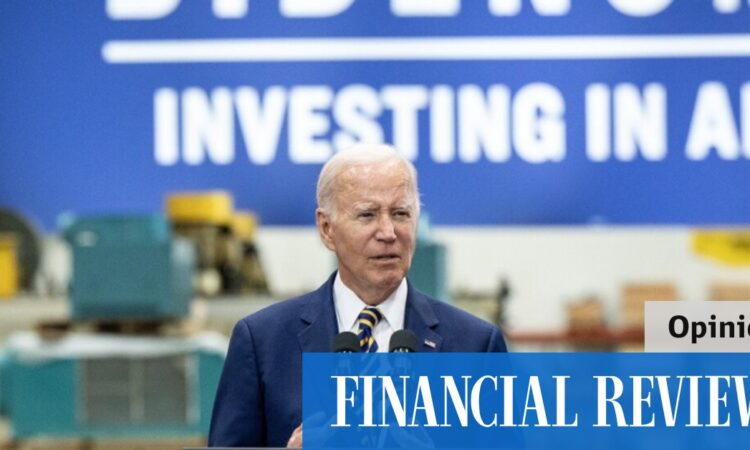Future Fund could help stop Joe Biden’s subsidies hurting Australia’s renewable energy industries

To keep global warming to well below 2 degrees and keep 1.5 degrees within reach – as called for in the Paris Agreement – emissions need to be reduced by 45 per cent by 2030 and reach net zero by 2050.
But based on emission reductions to date, it is far from certain that the Paris Agreement will avoid the Tragedy of the Commons. It is in the interests of national leaders to say they are committed to net zero emissions but, recognising they won’t be leading their countries in 2050, to proceed more slowly to avoid the cost of decarbonisation.
In fact, the World Meteorological Organisation is now forecasting that the world will breach the 1.5°C warming limit as early as 2027 at least on a temporary basis.
As much of the world falters on decarbonisation, through the misleadingly named Inflation Reduction Act the Biden administration is implementing a massive program to subsidise the production of renewable energy and of components for renewable energy generation, the uptake of electric vehicles, and the adoption of energy efficiency.
Subsidies for the energy transition are America’s approach to managing the unpriced negative externality of carbon emissions; a recognition that the alternative of a tax on carbon is not politically feasible.
Australia and other countries seeking to decarbonise now face a fresh diabolical problem. While we cannot compete with the US$ 1 trillion ($1.56 trillion) scale of American subsidies, if we don’t subsidise our own emissions-reducing industries, we face the prospect of losing those opportunities to the United States.
This risk was recognised at the ALP’s National Conference last week. Climate Change and Energy Minister Chris Bowen told delegates that the task of the Australian government was to ensure that the Inflation Reduction Act does not distort activity that otherwise would have happened in Australia.
While subsidies wars are not optimal from a first-best economic perspective, the Inflation Reduction Act leaves the Albanese government no realistic choice if it is to achieve its 43 per cent emissions reduction and 82 per cent renewable energy targets by 2030. Already some analysts are questioning the achievability of the renewable energy target.
Bowen told the conference the government was formulating its response to the Inflation Reduction Act. It had already set aside funds in the Clean Energy Finance Corporation, the Australian Renewable Energy Agency and the National Reconstruction Fund.
But will this be enough to meet the government’s 2030 renewable energy target and any new 2035 emission reduction target as required by the Paris Agreement?
A report by Dimitri Burshtein from the Centre for Independent Studies proposes that the Future Fund be shut down and the proceeds used to pay down government debt.
The idea has some merit, but it ignores the fact there remain sound targeted uses for public investment of the type deployed by the Future Fund. Perhaps a portion of the proceeds from liquidating the Future Fund should be allocated to the task of decarbonisation to help secure Australia’s future as a renewable energy superpower, partially levelling the playing field Australian industry faces in raising equity capital against the Inflation Reduction Act.
And since Australia has a housing problem, a legacy of states closing down their housing commissions a couple of decades ago, some of the proceeds could also be used to increase the supply of public housing.
These policy suggestions are but thoughts, but thoughts can lead to good policy. They are at least worth debating.






